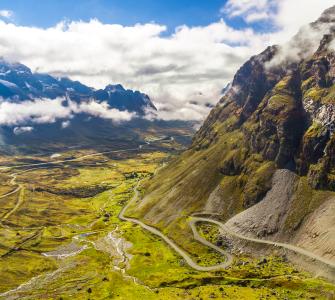The Madidi Landscape, a protected area in Bolivia’s northwest La Paz Department, is home to more than 8,000 species of plants and more than 1,400 vertebrate species. In addition to its incredible biodiversity, the national park is home to 31 indigenous communities and overlaps with four indigenous territories (Tierras Comunitaria de Origen, TCOs): TCO San Jose de Uchupiamonas, TCO Tacana I, TCO Lecos de Apolo, and TCO Lecos de Larecaja. A series of political reforms and legislative developments throughout the 1990s and early 2000s recognized the multiethnic and multicultural population of Bolivia, establishing and strengthening the rights of indigenous peoples over the management of their lands and the sustainable use of the natural resources within their territories with respect for the values, beliefs, and customs of their cultures. In instances where protected lands overlap native community lands, the New Political Constitution of the State protects the right of indigenous peoples to exercise autonomy in managing their lands, including natural, economic, and financial resources.
In collaboration with Wildlife Conservation Society (WCS), Conservation Strategy Fund (CSF) developed a financing mechanism to aid in the management of indigenous territories in the Madidi Landscape. The three main objectives of this project were to (1) support the Central Indigenous Peoples of La Paz (CPILAP) and other indigenous organizations in identifying minimum governance guidelines for a financing mechanism for indigenous territorial management; (2) identify financial requirements for indigenous territorial management; and (3) identify institutional alternatives for managing a support fund for territorial management. The project was conducted in a series of three phases to produce governance guidelines, financing requirements, and ultimately, the design of a financing mechanism for territorial management. Each phase took into account the history and needs of indigenous groups through diagnostic workshops, historical budget analyses, validation of financial requirements with the four TCOs, and consideration for the project’s compatibility with the Shandia Vision1, a climate financing framework established by the Coordinator of Indigenous Organizations of the Amazon River Basin (COICA).
We produced brief progress reports, specific annual and projected budgets for each indigenous territory, and a trust fund mechanism for indigenous peoples to utilize in the financial management of their territories, providing support for sustainable management and use of resources across one of Bolivia’s most biodiverse regions.
This project was conducted in partnership with the Wildlife Conservation Society.
Photo: Death Road, Bolivia
Photo credit: Shutterstock.com
(1)1. Accelerate the recognition and enforcement of the land, forest, and resource rights of Indigenous Peoples, Afro-descendant Peoples, local communities, and the women within those communities; 2. Ensure the Free, Prior and Informed Consent (FPIC) of communities in all projects that may impact human, land and resource rights; 3. Increase dedicated climate, conservation, and development financing and direct funding access for communities and their priorities, and ensure their full and effective participation in all nature- based climate and conservation actions and decisions, from design through implementation; 4. Bring an end to the criminalization, intimidation, and killing of land and environment defenders; 5. Effectively incorporate traditional knowledge into all climate change policies and practices.”

